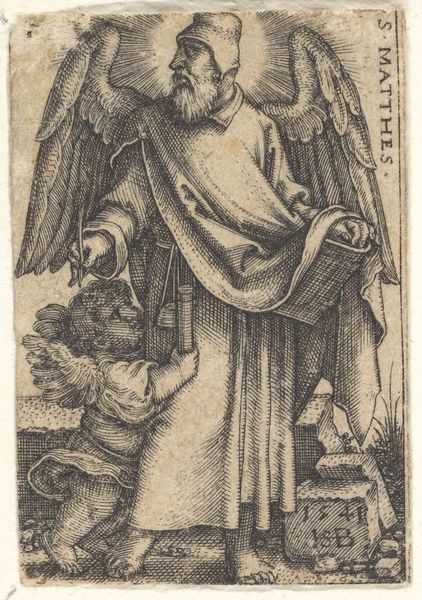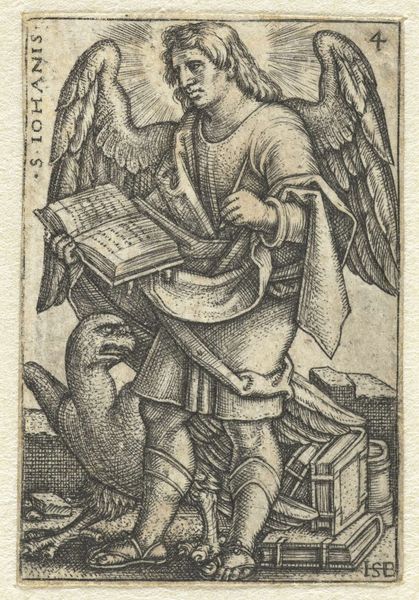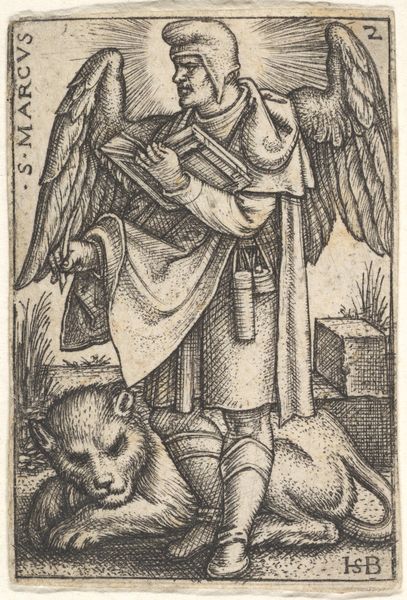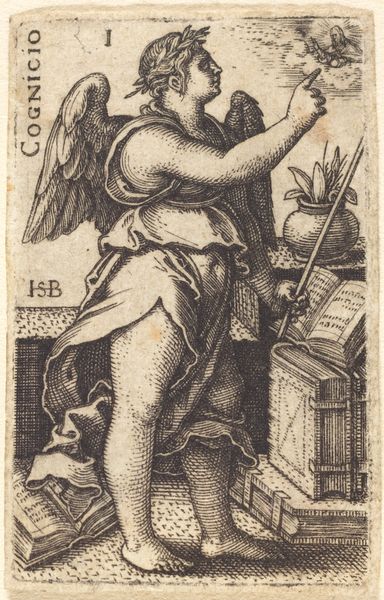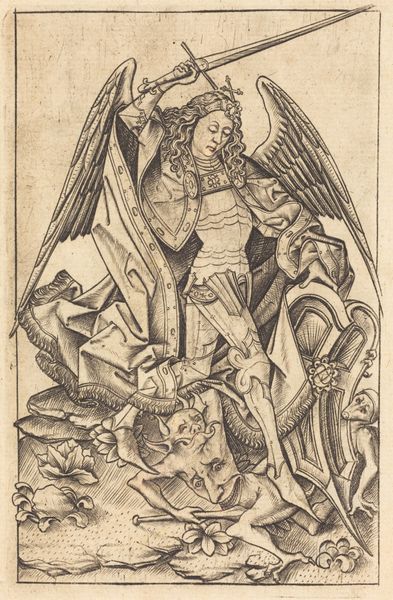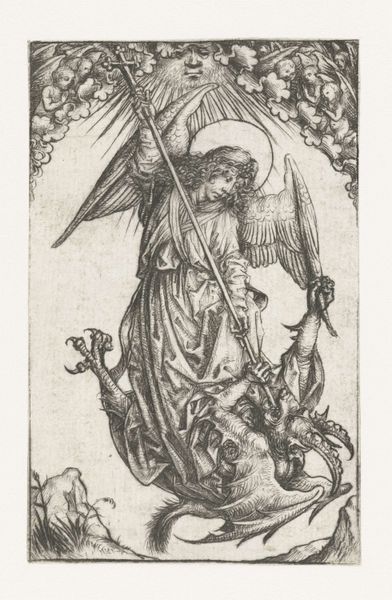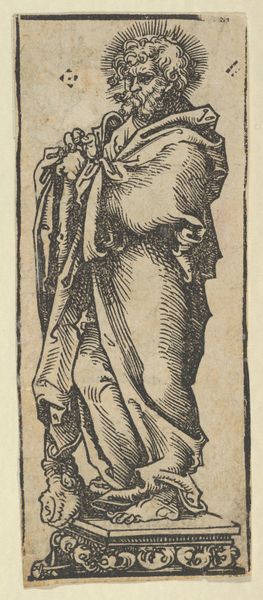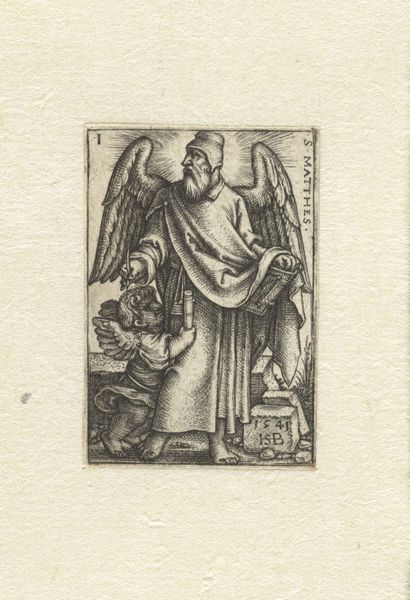
print, engraving
#
portrait
# print
#
figuration
#
11_renaissance
#
portrait drawing
#
northern-renaissance
#
engraving
Copyright: National Gallery of Art: CC0 1.0
Curator: Before us we have "John," an engraving by Sebald Beham. It’s a striking Renaissance-era print. What are your initial thoughts? Editor: My immediate impression is the density of the composition. The figure of John, coupled with his symbol the eagle, and those stacked books creates an incredibly compact image. It's a little overwhelming visually. Curator: Considering Beham’s historical context, his role as one of the Little Masters—engravers known for small, intricate prints— the print's size speaks to a specific kind of viewership and consumption. Prints facilitated the dissemination of knowledge, both religious and secular. The market for these kinds of images was vast, think of the implications for workshop production and distribution. Editor: The figure itself presents such an interesting study in contrasts. The halo of radiating lines behind the angel's head emphasizes its classical source. What strikes me is the figure's heavy drapery. There is clear attention to the details of light and shadow playing across these textures. Curator: Right. And think about the act of engraving, the repetitive labor of carving lines into a metal plate, and the final transfer to paper. Beham was, on more than one occasion, censured and banished from Nuremberg for heresy. Producing images outside the prescribed doctrinal guidelines had serious consequences. Editor: The choice to include the books at the bottom further layers the image. Compositionally, the books work well to support the image, but they suggest John's access to theological thought and tradition. The entire composition rests on this literal foundation of learning. Curator: Exactly, engraving like this relied on sophisticated craftsmanship and distribution networks, which supported emerging ideas and artistic autonomy. In many ways, it makes visible the machinery of culture, and of belief, in 16th-century Europe. Editor: Examining how "John" balances classical form and ornate detail while portraying such a studious figure shows us Sebald Beham was an accomplished Northern Renaissance artist working in printmaking. Thank you for walking us through that, I feel I can understand that era much better. Curator: Thank you. Reflecting on the artwork reveals its value. It bridges social conditions with the making and distribution of art, while enhancing our comprehension of form and representation.
Comments
No comments
Be the first to comment and join the conversation on the ultimate creative platform.
